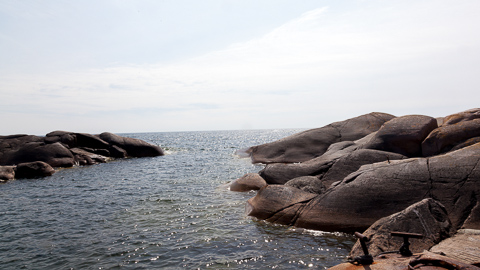Baltic Sea Nutrients Flow into the North Sea
The Baltic Sea has a far stronger effect on the state of the North Sea than what has been previously thought. According to a recent University of Turku study, water flowing out from the Baltic Sea affects the salinity of and the number of phytoplankton and zooplankton in the North Sea. The results also suggest that Baltic Sea waters also affect North Sea herring offspring numbers.

According to Research Director Ilppo Vuorinen from the Archipelago Research Institute, these recent results provide a new perspective for research, conservation and resource utilisation that concern the ecosystem of the North Sea.
– The countries around the Baltic Sea contain around 250 million people, and the sea area is important for fishing and natural resource utilisation, among others. For example, measures that reduce the amount of nutrient emissions in the Baltic Sea catchment area could also improve the environmental state of the North Sea, where eutrophication is especially a regional problem, says Vuorinen.
This finding could also affect the significance of the Baltic Sea.
– If changes in the state of the Baltic Sea affect the state of the North Sea, we can assume that the Baltic Sea will become more significant for the European Union.
Part of the yearly amount of fresh water to the Baltic Sea evaporates, and part mixes into the Baltic Sea. Any surplus in the Baltic Sea's water balance is discharged into the North Sea through the Danish straits.
– This is no small amount of water, as the yearly amount of outflowing water is at its peak double the amount of runoff water from the North Sea's own catchment area. The less saline water from the Baltic Sea mixes into the North Sea water especially in its eastern part, which is for example the habitat of North Sea herring offspring, says Vuorinen.
The data of the study was compiled from public databases and analysed with the help of statistical models that are based on both time series analysis and generalised linear mixed models. Outflow from the Baltic Sea was observed to affect seawater salinity and the number of phytoplankton and zooplankton in the North Sea.
Changes in the climate have increased the amount of rainfall in the Baltic Sea catchment area. Due to the increased rainfall, the amount of fresh water that flows into the Baltic Sea has increased, and its most well-known consequence is the disappearance of cod from fishing nets. The increased amount of fresh water in the Baltic Sea has been in part intensified by the lack of saline pulses from the North Sea.
– Baltic Sea research is mainly focused on observing the effects that lowered salinity has on the state, species and ecosystem of the Baltic Sea. So far, there has been no consideration whether the effects of the increased amount of fresh water in the Baltic Sea could affect areas outside the Baltic Sea, notes Vuorinen.
He adds that the question is reasonable, as the waters in the Baltic Sea are part of a vast circulation system that is regulated by climatic factors.
The research group includes Docent Jari Hänninen, Professor Ilppo Vuorinen and Docent Marjut Rajasilta from the Archipelago Research Institute, as well as Professor Philip C. Reid from the University of Plymouth. The research results have been published in the scientific journal Progress in Oceanography.
Text: Erja Hyytiäinen
Translation: Sam Parwar
Photo: Hanna Oksanen